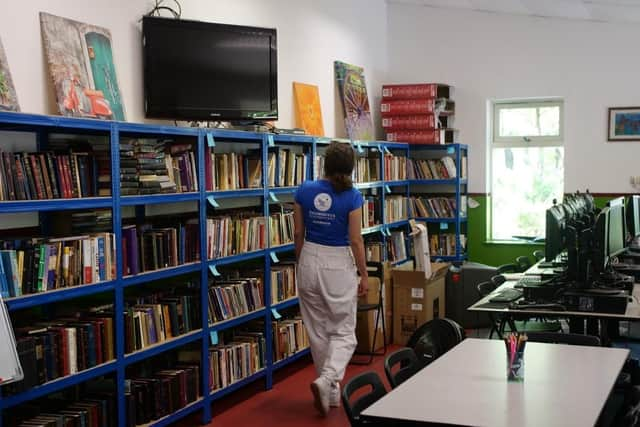The untold story of the Ukrainian Roma refugees facing a bleak winter - Peter Robertson, Christian Aid
It’s a three-hour drive from Budapest to Hungary’s second city Debrecen. The landscape is flat and largely featureless farmland – typical of the Transcarpathia region that stretches into Ukraine. There’s little natural protection from the icy blasts that in a few weeks could be blowing from the east.
In the car, I contrasted the plentiful media coverage about the general plight of Ukrainian refugees with the largely untold story of Roma people. There are estimated to be up to 150,000 Roma in Ukraine. It’s not known how many women and children have fled.
Advertisement
Hide AdAdvertisement
Hide AdThere have also been unverified reports of difficult border crossings because many lack documentation. Many have ended up in Hungary as they speak the same language. Others have gone to Romania and Moldova.


Before we got to the city’s outskirts, there was a landscape contrast too as we turned off into dense woodland. Within a few kilometres we saw the entrance sign and gates. It was still advertising its previous life as a secluded summer camp for disadvantaged children.
The atmosphere was tranquil and relaxed. Neat rows of small chalet huts stretched along a shaded avenue. Roma women were busy caring for their youngest children or sweeping the dust away from their thresholds.
From December onwards, they could be sweeping snow. I couldn’t help but compare the holiday setting and flimsy chalet doors with what the winter weather might throw at them.
Advertisement
Hide AdAdvertisement
Hide AdAbel, the camp’s director, walked around with me and told me the story of the camp. Last December, the rundown site was put up for sale by the Dorcas charity. Two summers of Covid had prevented young people from staying there and it had become a financial burden.
He remembered waking up on the day the war started and his first thought being: “Now we’ll never be able to sell it.” But within hours they’d scrapped the sale to set it up for refugees instead. Within days they received a 200,000 Euros grant from a Dutch Christian business group to make the camp ready.
Frantic work followed to update the dilapidated infrastructure. He didn’t know then that they would be taking in Roma refugees or that it would have to stay open all year. Once they heard about their treatment elsewhere, it became obvious who should be offered shelter.
Within weeks, the first Roma women and children arrived with just what they could carry. Soon it had expanded to 200 people. For 10 Euros a day per person, the camp provides security, food, shelter, laundry and washing facilities. Now there’s a waiting list.
Advertisement
Hide AdAdvertisement
Hide AdI talked to Maria, aged 24, who had crossed the border last February along with her seven-year-old daughter and her two-year-old son Sandor. She said it was also a dark time because her mother had recently died.
“There were huge numbers at the border. It took us half a day to cross and then we were put on a bus. All the children were crying. We spent the night in a milk processing plant and then went on to Budapest.”
The family was shuttled from place to place in the city for two months before she heard about the camp from a friend. “I like being here. I feel safe and protected. Some of my relatives are here too but my husband, brother and father are still in Ukraine.”
She had a hard life in Ukraine picking potatoes for a living. She wants to stay and work in Hungary to build a new life. Many of the refugees have found paid jobs running the camp or as local cleaners, wood cutters and builders.
Advertisement
Hide AdAdvertisement
Hide AdShe was also excited about her children getting an education. Many Roma people can’t read or write and have little formal education. Over the summer, Christian Aid’s local Hungarian partner HIA, funded a play scheme to help children learn by doing. They also hired five teachers for the new term. Lessons are in the camp because the local schools claim they are “full”.
There are advantages. It means there are no transport costs ferrying the children to different schools and the camp can continue to provide support to the families in one place.
Attitudes to Roma people were also reflected by the local police turning up in full riot gear soon after the camp opened. They were expecting a lawless ghetto but quickly left when they found it well ordered and peaceful.
In the Roma camp, there is a bright spot. The education building was a priority and is now insulated enough that it can continue operating all year. For the families here, it’s their symbol of resilience and hope for a better future in a place they’ve started to call home.
Peter Robertson is a Yorkshire-born journalist working with Christian Aid.